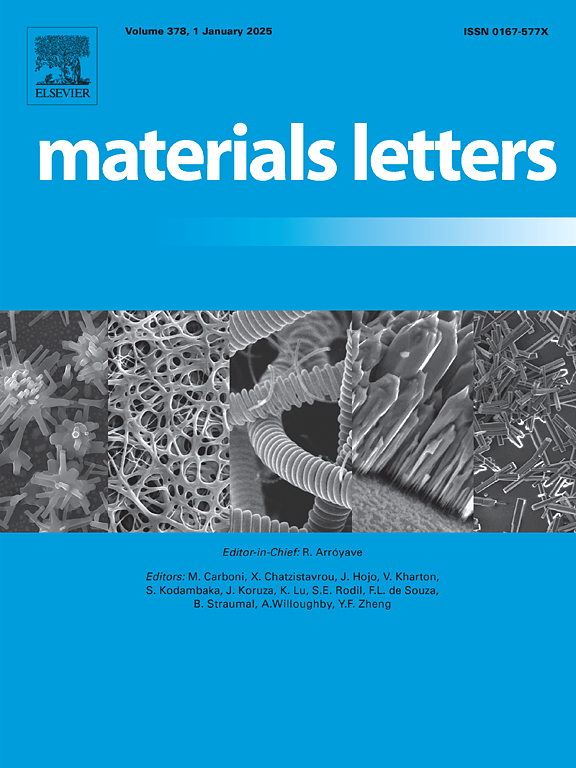Friction stir welding parameters for improved joint integrity in dissimilar-thickness Al-Mg-Sc alloys
IF 2.7
4区 材料科学
Q3 MATERIALS SCIENCE, MULTIDISCIPLINARY
引用次数: 0
Abstract
This study explores the friction stir welding (FSW) of AlMgSc alloys with an emphasis on process parameter optimization and mechanical performance evaluation. A robotic FSW setup equipped with a conical triflat threaded pin was used to join sheets of dissimilar thickness under varying welding conditions. Optimal parameters produced defect-free joints that retained up to 94% of the base material’s yield strength. Microstructural analysis identified oxide agglomeration at the thermo-mechanically affected zone (TMAZ)–nugget interface—particularly on the advancing side—as a key contributor to failure, whereas successful joints exhibited fragmented oxide layers that reduced the risk of brittle fracture. Microhardness mapping revealed asymmetric hardness profiles, indicating strain localization and non-uniform material flow. Fractographic analysis showed mixed-mode fracture mechanisms influenced by oxide distribution and weld zone morphology. These results underscore the importance of oxide control, the potential benefits of asymmetric tool design, and the value of post-weld treatments to improve joint ductility and reliability.
提高不同厚度Al-Mg-Sc合金接头完整性的搅拌摩擦焊接参数
研究了AlMgSc合金搅拌摩擦焊(FSW)工艺参数优化和力学性能评价。在不同的焊接条件下,采用安装锥形三平螺纹销的机器人搅拌焊接装置对不同厚度的钢板进行连接。最佳参数产生的无缺陷接头保留了高达94%的母材屈服强度。显微结构分析发现,在热机械影响区(TMAZ) -熔核界面,特别是在推进侧,氧化物聚集是导致失败的关键因素,而成功的接头显示出破碎的氧化物层,从而降低了脆性断裂的风险。显微硬度图显示硬度分布不对称,表明应变局部化和材料流动不均匀。断口形貌分析显示受氧化物分布和焊缝形貌影响的混合型断裂机制。这些结果强调了氧化物控制的重要性,非对称工具设计的潜在好处,以及焊后处理对提高接头延展性和可靠性的价值。
本文章由计算机程序翻译,如有差异,请以英文原文为准。
求助全文
约1分钟内获得全文
求助全文
来源期刊

Materials Letters
工程技术-材料科学:综合
CiteScore
5.60
自引率
3.30%
发文量
1948
审稿时长
50 days
期刊介绍:
Materials Letters has an open access mirror journal Materials Letters: X, sharing the same aims and scope, editorial team, submission system and rigorous peer review.
Materials Letters is dedicated to publishing novel, cutting edge reports of broad interest to the materials community. The journal provides a forum for materials scientists and engineers, physicists, and chemists to rapidly communicate on the most important topics in the field of materials.
Contributions include, but are not limited to, a variety of topics such as:
• Materials - Metals and alloys, amorphous solids, ceramics, composites, polymers, semiconductors
• Applications - Structural, opto-electronic, magnetic, medical, MEMS, sensors, smart
• Characterization - Analytical, microscopy, scanning probes, nanoscopic, optical, electrical, magnetic, acoustic, spectroscopic, diffraction
• Novel Materials - Micro and nanostructures (nanowires, nanotubes, nanoparticles), nanocomposites, thin films, superlattices, quantum dots.
• Processing - Crystal growth, thin film processing, sol-gel processing, mechanical processing, assembly, nanocrystalline processing.
• Properties - Mechanical, magnetic, optical, electrical, ferroelectric, thermal, interfacial, transport, thermodynamic
• Synthesis - Quenching, solid state, solidification, solution synthesis, vapor deposition, high pressure, explosive
 求助内容:
求助内容: 应助结果提醒方式:
应助结果提醒方式:


